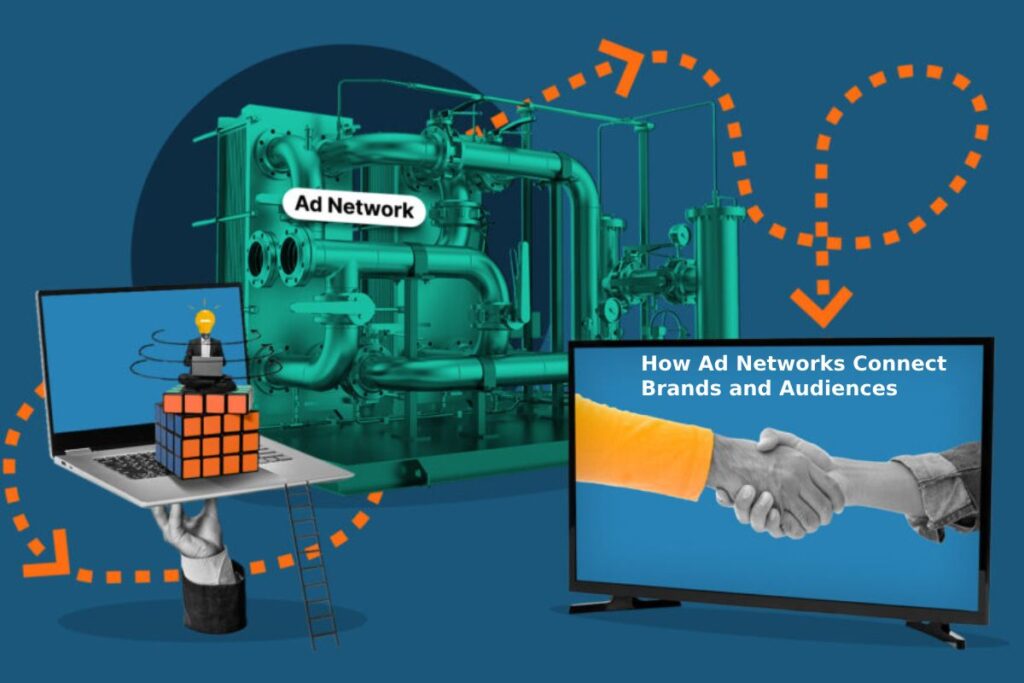Getting in front of the right audience at the right time, that’s the goal. But in a digital landscape packed with platforms, devices, and ever-shrinking attention spans, how do you actually make it happen?
This is where ad networks quietly do the heavy lifting. If you’re running campaigns or building a brand online, understanding how ad networks function is essential.
What Ad Networks Actually Do
An ad network connects advertisers (like your brand) with publishers — websites, apps, or digital platforms that have ad space to sell. Instead of buying placements one by one, you tap into an entire inventory of spaces across the internet through one access point. The network does the matchmaking. You provide the creative and targeting inputs; they handle distribution, auctions, and delivery.
It’s built to be scalable. You don’t need to negotiate with hundreds of site owners. You work with one network and let the automation do the rest.
Why Marketers Use Ad Networks
If you’re wondering why these systems have stuck around for so long, it comes down to value. Ad networks make your campaigns easier to run, easier to scale, and easier to optimize.
Here’s what they unlock:
- Broader reach – Access to a wide variety of publishers without separate contracts or outreach
- Streamlined buying – One campaign setup can push ads across dozens (or hundreds) of placements
- Audience targeting – Use data to refine who sees your ad, based on interests, location, behavior, or context
- Performance optimization – Networks often monitor campaign results and adjust delivery automatically to improve outcomes
- Flexible formats – From banners to video to native placements, most networks support a mix of creative types
Instead of managing a dozen different channels separately, an ad network gives you centralized control and visibility across multiple environments.
How Targeting Works Behind the Scenes
Ad networks don’t just randomly toss your ad onto any site. They’re powered by algorithms that decide where your creative will get the most traction.
Depending on the network, your targeting might include:
- Demographics (age, location, device)
- Context (type of content on the page)
- Behavior (past browsing or shopping habits)
- Time and frequency (when and how often a user sees your ad)
You’re not guessing. You’re placing ads where they’re statistically more likely to connect. This improves efficiency; fewer wasted impressions, better clickthrough rates, and stronger overall performance.
Real-Time Auctions Make It All Happen
One of the most interesting aspects of ad networks is how fast everything happens. The moment someone loads a webpage, the available ad space is sent out to the network. Multiple advertisers (including you) are entered into a real-time auction. If your bid is the strongest, based on targeting, budget, and relevance, your ad is served instantly. It takes milliseconds. You don’t see the auction. You just see results: impressions, clicks, and conversions.
Types of Ad Networks and What They Offer
Not all ad networks operate the same way. Depending on your campaign goals, you might choose a specific type of network that aligns with your strategy.
Here are the most common types marketers use:
- Horizontal networks – These offer mass scale, placing ads across broad categories and general-interest websites.
- Vertical networks – More focused. These target specific niches or industries, like gaming, fashion, or healthcare.
- Premium networks – Prioritize high-quality placements on trusted, vetted publishers. Usually involve stricter brand safety controls.
- Performance-based networks – You only pay when someone clicks or converts. These are often used in direct response or ecommerce campaigns.
Choosing the right type depends on your campaign’s intent: awareness, engagement, or action.
Publisher Benefits (And Why That Matters to You)
While you’re focused on audience targeting and performance, publishers are focused on monetization. Ad networks solve a problem for them, too: how to consistently fill their inventory with ads that generate revenue.
For marketers, this is good news. You’re getting access to environments that are incentivized to show your ad and keep users engaged with it. When publishers benefit from performance, they’re more likely to maintain high-quality content and clean layouts that make your ad stand out.
The Industry Is Shifting — Here’s How
The way ad networks operate today isn’t how they’ll operate tomorrow. With the decline of third-party cookies and increasing pressure on data privacy, networks are being forced to adapt.
Key trends to keep in mind:
- Greater reliance on first-party data – You may need to use data from your own audience and CRM to power future targeting.
- Contextual targeting is making a comeback – Instead of following users around, networks are going back to matching ads with relevant content.
- Smarter automation – AI and machine learning are helping networks place ads more intelligently, without overreaching on user data.
If you’re running digital campaigns, stay close to these shifts. The networks that adapt responsibly will continue to deliver results without crossing privacy boundaries.
Takeaway for Marketers
You don’t need to see how the machine works every second. But you do need to know what it’s doing for you.
Ad networks are the engine powering large chunks of digital advertising, quietly matching brands with real people in milliseconds. They make your campaigns scalable, your targeting sharper, and your placements more efficient.
Understanding how they operate and how to use them strategically gives you a clear edge in a crowded digital space.

